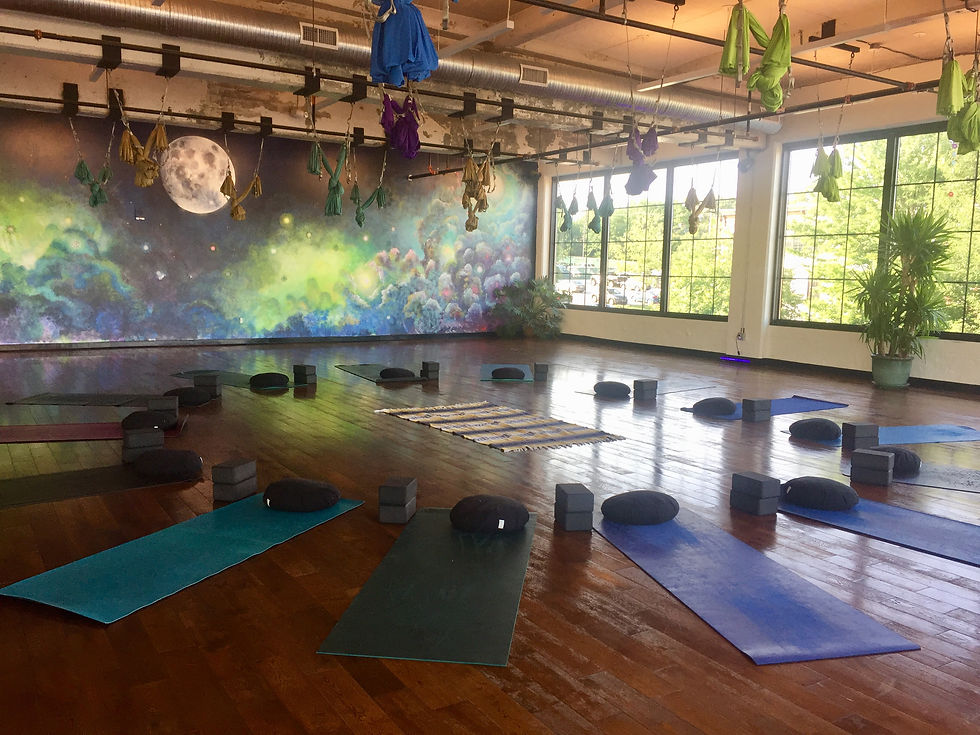Chocolate halo!!! Cacao Ceremony
- Yoga Oasis
- Jan 23, 2019
- 2 min read
Updated: Jan 27, 2019
by Sarah Ingraham

Ceremonies bring a community together by means of a collective thread, while connecting participants to the spirit world. Typically ceremonies are used for healing, transformation, and celebration. Ceremony offers a sacred space, or an intentional container, with three phases: an opening of the sacred space, a statement of intention, and a closing of the sacred space.
An opening can be as simple as a drum, rattle, flute, or something that signifies entering and laying out the space. The middle part of a ceremony, stating an intention, depends on the type of ceremony. For example, in a cacao ceremony, the intention can be gratitude for the medicinal properties of cacao, the earth that provided it, as well as the hands that picked and dried it. Lastly, closing a sacred space is reached through a final prayer, a collective Om, or blowing out a candle.

Cacao, or chocolate, is a great vehicle for ceremonial spaces and a powerful heart opener. A native of Central America, Cacao beans were so valued that in Mexico they were used as standard currency as late as 1887. Today Africa and Brazil supply 90% of the world’s demand for chocolate.
Cacao has many medicinal properties; it is high in antioxidants, detoxifying for the liver and kidneys, a good source of iron, magnesium, and calcium, a natural mood elevator, and an antidepressant.
Theobromine is the main active ingredient in cacao that helps to release dopamine, a pleasure hormone. Another ingredient, phenethylamine, relieves stress and depression. In addition, cacao contains proanthocyanidin flavonoids that help to reduce free radicals, fight artery-clogging plaque, and lower blood pressure. On a cautionary note, it is important to know that mixing cacao with antidepressants can have bad side effects, such as, headaches. One who is on antidepressants can partake in ceremony, although it is advisable to drink less cacao.
How to prepare cacao for ceremonial purposes:
Ceremonial dosage is around 7oz. water: 2oz. cacao per person but ratio is based on personal preference. All spices are optional and based on preference.

Ingredients
100 % RAW CACAO BAR
Coconut sugar, honey, or agave to taste
Cinnamon to taste
Chili or Cayenne pepper to taste
Cardamom to taste
Powdered ginger to taste
Vanilla to taste
Coconut milk on the side
Directions
1. Shave cacao into fine pieces that will melt easily and evenly
2. Place chocolate in a double boiler
3. Heat water (with preferred spice added) in a side kettle so that it is hot to the touch but not boiling
4. Add warm water little by little
5. Stir with attention until chocolate is smooth and silky
6. Add sweetener and more spices to taste
7. Serve hot with additional spices, sweetener, and coconut milk on the side


Cacao is served after the opening of a ceremony once the space has been laid
out. Cacao is served to each person individually and everyone drinks together. While drinking, the intention of the ceremony can be set. Perhaps the intention is what we let go of and what we are calling in; each person can share with the group. The rest of the ceremony, based on personal preference of the leader, can involve yoga practice, singing or chanting, sound healing, ecstatic dance, or meditation and inner reflection. Participants may reach euphoric states, release negative emotions, and undergo powerful transformation.

References
The New Whole Foods Encyclopedia by Rebecca Wood
Kula Collective Art of Living and Healing, 300 hr






Comments